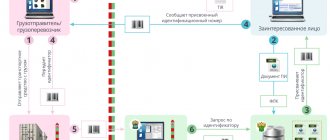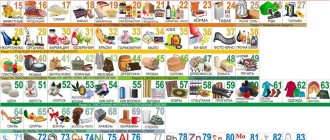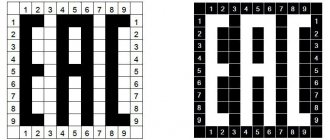Participants in foreign economic activity who supply equipment from abroad try to obtain a preliminary classification decision (PCR) for the goods before customs clearance of goods. This is the main reason for filling out the declaration. The presence of a ten-digit code for the classification of goods according to the Commodity Nomenclature of Foreign Economic Activity allows you to find out in advance the amount of duties and other payments.
It is called a preliminary decision because it is received before the customs declaration of the goods for which it was issued. Consequently, only after the actual arrival of the goods at the customs control zone or other place specified by the customs authority, it becomes possible to unambiguously correlate the PKR with the goods.
ATTENTION! We work only with legal entities.
What is the classification decision of the Federal Customs Service
This is an official document that is issued by the Regional Customs Administration or the Federal Customs Service in the prescribed form. It contains details and information:
- Name of the customs authority that made the decision on the classification of the goods.
- Registration number and date of the decision on the classification of the goods.
- Information about the applicant (name, taxpayer identification number, main state registration number, postal address).
- Name of product.
- Ten-digit classification code of the product in accordance with the Commodity Nomenclature of Foreign Economic Activity.
- Justification for the decision on product classification.
- List of product components, including:
- names of components, including parts that make up a separate component of the product;
- the number or weight of components, including parts that make up a separate component of the product, in the units of measurement used in the Commodity Nomenclature of Foreign Economic Activity;
- Details of documents that confirm the completion of a foreign economic transaction and in accordance with which the import or export of product components will be carried out.
- Name of the customs authority where the goods will be declared.
- The type of customs procedure under which the goods will be placed.
- The position, surname and initials of the official of the customs authority who made the decision on the classification of the goods, and his signature.
PKR, as a rule, are obtained for the purpose of unambiguously classifying a particular product when moving it across the customs border of the EAEU or importing complex equipment into the customs territory of the EAEU (when it is impossible to bring this equipment simultaneously or within the period established for temporary storage). Information from this document is indicated in the goods declaration. The assigned code affects the amount of duty and other mandatory payments.
When is a class solution required?
A class decision may be needed when the importer or customs office has doubts about the HS code of a product before its importation, or when the product has already been imported and is in a temporary storage warehouse. To avoid storage costs and other unpleasant moments during customs clearance, we recommend that you issue a class decision in advance.
The class solution can also help in a situation where customs carries out an inspection after the release of goods and wants to “reclassify” the goods, that is, change its HS code and charge additional customs duties. In this case, the class solution will also avoid unnecessary payment of payments and possible administrative fines.
In other words, importers draw up a class decision for their peace of mind and confidence that customs will not have questions about the product code, especially when this code is not obvious, which happens quite often.
Decisions on the classification of goods are drawn up in accordance with Articles 21 and 23-27 of the Customs Code of the Eurasian Economic Union (EAEU Customs Code).
Why is it necessary?
Having a document simplifies the customs clearance process. Employees will view all equipment as a whole, rather than as separate components.
A single code for all components allows you to transport the entire shipment across the border and saves time when going through the customs clearance procedure. And this is especially important when it comes to innovative mechanisms and devices.
Another advantage that the classification solution provides is a reduction in financial costs. The owner of the cargo is exempt from completing a declaration for each part of the device.
There are situations when customs officials, during the registration of complex equipment, do not accept the product code declared by the declarant. Instead, they assign it a different code and ask for additional permitting documentation.
All this creates difficulties for the declarant: an increase in the rates of import customs duties, if at the customs post a decision is made on the classification of the goods by officials of this post.
The list of documents depends on the nature of a particular product for which you need to obtain a PKR, the purpose of using the goods and other conditions.
- Preliminary decision on the classification of goods
Customs legislation provides for the possibility of preliminary classification of goods in accordance with the Commodity Nomenclature of Foreign Economic Activity; for this purpose, customs authorities can make a decision on the classification of goods before their customs declaration using two mechanisms:
- obtaining a preliminary decision on the classification of goods;
- obtaining a decision on the classification of goods transported across the customs border of the Union in unassembled or disassembled form, including incomplete or unfinished form.
The procedure for making a preliminary decision on the classification of goods is established by Art. 23 EAEU Labor Code and Art. 18 of the Federal Law of August 3, 2018 No. 289-FZ “On customs regulation in the Russian Federation and on amendments to certain legislative acts of the Russian Federation.”
A preliminary decision on the classification of goods may be necessary when the declarant has doubts about the product code, especially if the declarant and the customs authority have differences in approaches to classifying the goods. In order to avoid additional costs after the import of goods, it is necessary to determine the need to obtain a classification decision at the stage of planning a foreign trade transaction before importing the goods.
Customs disagreement with the declared code may lead to additional costs for the declarant:
- request for additional documents and information and, as a consequence, an increase in release time, which leads to increased costs for storage and transportation of goods;
- additional charge of customs duties;
- bringing to administrative responsibility.
The attractiveness of preliminary decisions on the classification of goods lies in the fact that declarants, knowing the product code, can decide in advance on the measures of customs tariff, non-tariff regulation and protection of the internal market and plan their activities taking into account this information, which significantly facilitates both foreign economic activity itself and declaration.
In addition, consignments with preliminary decisions or classification decisions are not subject to the RMS risk profiles associated with the risk of a misclassification claim. This allows you to register such batches using auto-registration and auto-release technologies.
A preliminary decision on classification is made in regional customs departments on the basis of an application and documents submitted by the declarant of goods. After such a decision is made, when declaring goods through customs, information about product codes is indicated in accordance with the decision made.
A preliminary decision on the classification of goods is applied on the territory of the Member State whose customs authorities made such a preliminary decision on the classification of goods, and when declaring customs in accordance with the customs procedure for customs transit, also on the territories of other Member States.
A preliminary decision on the classification of goods is made for each product name, which includes a specific brand, model, article number and modification.
An application for a preliminary decision on the classification of goods is submitted in the form of an electronic document, signed with an enhanced qualified electronic signature, using the Unified Portal of State and Municipal Services or a paper document.
The exchange of electronic documents and (or) information in electronic form is carried out through the interaction of the information system of the customs authority and the information system of the applicant using the Unified Portal of State and Municipal Services.
The following documents and information must be submitted with the application for a preliminary decision:
- documents containing information about the composition of the goods, if the EAEU Commodity Nomenclature for Foreign Economic Activity establishes requirements for the content of any substances (elements) or materials in the goods;
- documents containing information about processing processes and types of processing of goods, if the classification feature is the type of processing of goods or the degree of processing of goods;
- documents containing information about the technical characteristics of the product and the principle of operation, if the classification criterion is weight, size, power, performance, other technical characteristics of the product (technical documentation, drawings, block diagrams, technical passport, operating instructions, technological diagrams, user manual , other documents containing information about the technical characteristics of the product and the principle of operation);
- a document (power of attorney) confirming the authority of a person, if the application for a preliminary decision and the documents accompanying it are signed by an authorized person;
- information about payment of state duty in the amount of 5,000 rubles. for making one preliminary decision.
If necessary, samples and (or) samples of goods, photographs, drawings, drawings, product passports and other documents necessary to make a preliminary decision on the classification of goods are submitted.
The authorized customs authority refuses to consider an application for a preliminary decision on the classification of goods in the following cases:
- if the application and documents attached to it, submitted on paper, are signed by an unauthorized person;
- if the application and documents attached to it do not meet the established requirements;
- if the applicant has not paid the state fee.
The decision to refuse is made within twenty calendar days from the date of registration of such an application and is sent to the applicant.
Once the reasons for refusal have been eliminated, the application may be resubmitted.
If the documents and information submitted by the applicant do not allow determining the product code, the customs authority notifies the applicant within twenty calendar days from the date of registration of the application about the need to provide additional information.
60 calendar days are allotted for providing additional information.
The customs authority refuses to make a preliminary decision in the following cases:
- if the applicant was previously issued a preliminary decision on the same product, except if there are less than 60 days left before the expiration of such a decision;
- if additional information requested by the authorized customs authority is not provided within the prescribed period or is not provided in full;
- if the application, documents attached to it, and the additional information provided, requested by the authorized customs authority, contain conflicting information.
The decision to refuse a preliminary decision is made within twenty calendar days and sent to the applicant.
A preliminary decision on the classification of goods is made within 60 calendar days from the date of registration of the application. If it is necessary to provide additional information, the specified period is suspended and resumed from the date of receipt of additional information.
A preliminary decision on the classification of goods is valid for five years from the date of its adoption.
The customs authority makes a decision to amend the preliminary decision it has made on the classification of goods if the customs authority or the applicant identifies errors that were made when making this preliminary decision and which do not affect the information about the product code.
The decision to amend the preliminary decision on the classification of goods comes into force from the date of adoption of such a preliminary decision.
The decision to terminate the preliminary decision on the classification of goods is made in the following cases:
- the customs authority has established that the applicant, in order to make this decision, submitted documents containing unreliable and (or) incomplete information, forged documents or unreliable and (or) incomplete information - in this case, the decision to terminate the preliminary decision comes into force from the date of adoption of such preliminary solutions;
- the customs authority has identified errors that were made when making this preliminary decision and which affect the information about the product code - in this case, the decision to terminate the preliminary decision comes into force from the day the decision to terminate the preliminary decision is made.
The decision to revoke a preliminary decision on the classification of goods is made in the following cases:
- changes have been made to the Commodity Nomenclature of Foreign Economic Activity that affect the classification of goods;
- The Eurasian Economic Commission (EEC) made a decision on the classification of certain types of goods, entailing a change in the classification of goods;
- customs authorities made decisions or gave explanations on the classification of certain types of goods, entailing a change in the classification of goods;
- The World Customs Organization has adopted decisions on the classification of goods applied by member states.
The decision to amend the preliminary decision on the classification of goods, the decision to terminate the preliminary decision, the decision to revoke the preliminary decision are sent to the applicant indicating the reasons for making such decisions.
A collection of preliminary decisions (without information about the applicant, preliminary decision number) can be found on the official website of the Federal Customs Service of Russia.
- Decisions on the classification of goods transported across the customs border of the Union in unassembled or disassembled form
Customs authorities decide on the classification of goods transported across the customs border of the Union in unassembled or disassembled form, including incomplete or unfinished form in accordance with Art. EAEU Labor Code and Art. , Federal Law dated August 3, 2018 No. 289-FZ “On customs regulation in the Russian Federation and on amendments to certain legislative acts of the Russian Federation.”
The list of goods in respect of which a decision on the classification of goods is made is approved by a decision of the EEC.
Such a decision on the classification of goods is made by the Commodity Nomenclature Department of the Federal Customs Service of Russia on the basis of technical documentation and a foreign economic contract submitted by the foreign trade participant.
A decision is necessary when a foreign trade participant imports equipment in several batches within a specified period of time (up to two years with a possible extension to six years).
In this case, it is possible to reduce the amount of customs duty, since most imported equipment has a zero or low duty rate, while components and parts of equipment may be subject to a higher duty rate.
This approach makes it possible to supply entire plants and production lines under one code.
In addition, declaring equipment supplied disassembled without a decision on the classification of goods poses the greatest risk from the point of view of the application of the RMS, since checking the correctness of the classification, as well as the list of components included in the equipment, their technological connection, functions performed and the corresponding technical documentation when releasing goods is very difficult.
The application is submitted in the form of an electronic document through your personal account or in the form of a paper document.
To receive an electronic decision on the classification of goods, the service “Classification of goods transported in the form of components” of the Personal Account of a foreign trade participant can be used. Using the service, the applicant will be able to submit an application and receive decisions on classification, conduct correspondence on requesting additional information, making changes to the decision, refusals, and also keep automatic records of imported equipment components when declaring.
The following are attached to the application:
- documents confirming the completion of a foreign economic transaction in relation to goods or the import of goods as a contribution to the authorized capital of the recipient;
- a list of product components in electronic or written form;
- documents containing a technical description of the product indicating the purpose, functions performed, principle of operation, including the interaction of individual components of the product;
- documents containing a description of the individual components of the product, indicating the purpose, functions performed, principle of operation, and the material from which they are made;
- assembly (installation) drawing (diagram);
- a document confirming the authority of the person who signed the application for making a decision on the classification of goods, documents attached to it.
Customs authorities refuse to consider an application in the following cases:
- if the application and documents attached to it, submitted on paper, are signed by an unauthorized person;
- if the application and documents attached to it do not meet the established requirements.
Such a decision on refusal is made no later than twenty calendar days.
Once the reasons for refusal have been eliminated, the application may be resubmitted.
If the submitted documents and information contain contradictory information and (or) are not presented in full required to make a decision on the classification of goods, the customs authority notifies the applicant within 20 calendar days of the need to provide additional information.
60 calendar days are allotted for providing additional information.
Customs authorities refuse to make a decision in the following cases:
- if the components of the goods, in accordance with the rules of classification of goods, do not form a single product;
- if the requested additional information is not provided within the prescribed period or is not provided in full;
- if the application, documents attached to it, and additional information provided contain conflicting information.
The decision to refuse to make a decision is made within twenty calendar days
The decision on the classification of goods is made within ninety calendar days. If it is necessary to provide additional information, the specified period is suspended for the period necessary to provide such information.
The customs authority decides to amend the decision on the classification of goods in the following cases:
- adoption by the EEC or the Federal Customs Service of Russia, a binding decision or clarification on the classification of certain types of goods by customs authorities;
- making appropriate changes to the Commodity Nomenclature of Foreign Economic Activity;
- detection of errors or typos made when making a decision or when preparing documents by the applicant;
- changing information about the applicant and (or) the customs authority where the customs declaration of goods will be carried out;
- a change in the terms of a foreign economic transaction, if such a change relates to a product or its individual components;
- submission by the declarant of an application to refuse further supplies of components of the goods.
The customs authority decides to terminate the decision on the classification of goods in the following cases:
- the customs authority has established that the applicant, in order to make a decision on the classification of goods, submitted documents containing unreliable and (or) incomplete information, or forged documents;
- the declaration for goods in respect of the last component of the goods in an incomplete or unfinished form is not filed before the expiration of two years, with the possibility of an annual extension of up to 6 years;
- the applicant refused to supply the goods, including after the import or export of individual components of the goods.
The decision to terminate the decision on the classification of goods comes into force from the day the decision on the classification of goods is made.
- Decisions and clarifications of the EEC and the Federal Customs Service of Russia on the classification of certain types of goods
In order to ensure uniform application of the Commodity Nomenclature for Foreign Economic Activity, the Eurasian Economic Commission makes decisions on the classification of certain types of goods based on proposals from customs authorities.
When the EEC identifies different classifications of goods in preliminary decisions on the classification of goods adopted by customs authorities, in decisions or clarifications on the classification of certain types of goods adopted (given) by the customs authorities of the EEC, decisions are made on the classification of certain types of goods on their own initiative.
These decisions of the EEC are declared invalid or are subject to change on the following grounds:
- change in the Commodity Nomenclature of Foreign Economic Activity;
- identifying errors made when making such decisions by the EEC and not affecting the classification of certain types of goods, for example, typos, technical errors, etc.;
- obtaining additional information about certain types of goods specified in the EEC decision, which affects the codes of certain types of goods, the description of certain types of goods and the application of the Basic Rules for the Interpretation of the Commodity Nomenclature of Foreign Economic Activity;
- recognition by the Court of the Eurasian Economic Union of the EEC decision or its individual provisions as inconsistent with the Treaty on the Union, international treaties within the Union and (or) decisions of the Union bodies.
Based on the proposals of the EEC customs authorities, explanations are given on the classification of certain types of goods.
Explanations on the classification of certain types of goods are accepted if the customs authorities have a unanimous opinion on the classification of such goods.
In the Russian Federation, such decisions and clarifications are made by the Federal Customs Service of Russia.
These decisions and clarifications are mandatory when classifying goods in Russia.
Additional material on the topic in the section Commodity nomenclature of foreign economic activity
Procedure for obtaining a classification decision
To obtain a classification code for complex equipment, you must submit a corresponding request to the Regional Customs Department or the Nomenclature Department of the Federal Customs Service of Russia. A package of documents is attached to it, including those confirming the description of the product. Product samples can also be provided.
The application must contain information, and documents must be attached to it in accordance with Art. 16 Federal Law dated August 3, 2018 No. 289-F “On customs regulation in the Russian Federation...”.
Additionally, information is provided on payment of the state duty for the service of obtaining a preliminary classification decision in accordance with the legislation of the Russian Federation on taxes and fees.
The application can be submitted electronically through the Internet information resource of the Federal Customs Service of Russia.
The classification solution is also suitable for the supply of high-tech equipment in different conditions:
After submitting a request, the FCS is given a period of 60 days to study all documents and make a decision. The period may be suspended if the customs authority requests additional information and documents for acceptance of the RPC
The decision on the classification of goods by the Federal Customs Service of Russia is drawn up in accordance with Article 16 of the Federal Law “On Customs Regulation in the Russian Federation” No. 289-FZ dated 08/03/2018.
In order to optimize the amount of customs duties in a legal way and obtain the desired code, you need to justify the correct classification of the goods. This reduces the likelihood of getting a solution that is completely different from what was expected.
How to register a class solution?
Send us the existing technical description of the product
We will analyze the characteristics of the product, determine possible classification options and the chances of obtaining a class decision according to the required HS code.
We will advise you on the further procedure for obtaining a class decision
With your participation, we will prepare a package of documents for submission to the RTU or the Federal Customs Service. Success in obtaining a class solution with the desired code and complete set largely depends on the correct preparation of the application and the attached documentation.
We will submit a package of documents to the RTU or the Federal Customs Service of Russia
We will send the documents to the RTU or the Federal Customs Service of Russia and will monitor the completion of each stage. We defend your interests and provide comprehensive explanations to responsible persons regarding the product itself and the submitted documents.
The importance of the customs code of a product
The classification code of a product also affects the passage of most customs procedures:
- Payment of customs duties (affects the amount and sometimes the order of payment).
- Application of non-tariff regulation measures: licensing, quotas, etc.
- Registration of customs documents.
There are differences in classification procedures that may result in higher or lower customs rates for the transport of goods. Experienced participants in foreign trade activities can use the classification according to technical specifications to their benefit, without violating legal norms.
How to proceed?
To receive a CD, a participant in foreign trade activities must contact the Commodity Nomenclature Department with a written request and provide the documents necessary to issue a FCS classification decision:
- application of a resident of a special economic zone, his data;
- name of the product, description of the main characteristics, properties, functions, scope of application;
- list of equipment components in electronic and paper form;
- assembly drawing, description of individual parts of the device indicating their purpose;
- information about the tests and examinations carried out;
- samples and samples of products;
- description of individual and transport packaging;
- equipment delivery time;
- name of the customs authority where the goods will be declared.
Requests for a CD are considered from the moment of submission within 90 days. But the classification decision of the Federal Customs Service for a period of 3 years will be mandatory for any customs authority of the Russian Federation, and will also exclude the challenge of the code by its employees.





